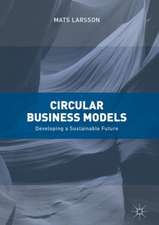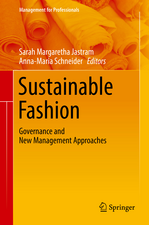Gender in Agriculture: Closing the Knowledge Gap
Editat de Agnes R. Quisumbing, Ruth Meinzen-Dick, Terri L. Raney, André Croppenstedt, Julia A. Behrman, Amber Petermanen Limba Engleză Hardback – 14 mai 2014
| Toate formatele și edițiile | Preț | Express |
|---|---|---|
| Paperback (1) | 704.87 lei 6-8 săpt. | |
| SPRINGER NETHERLANDS – 19 sep 2019 | 704.87 lei 6-8 săpt. | |
| Hardback (1) | 958.56 lei 6-8 săpt. | |
| SPRINGER NETHERLANDS – 14 mai 2014 | 958.56 lei 6-8 săpt. |
Preț: 958.56 lei
Preț vechi: 1168.98 lei
-18% Nou
Puncte Express: 1438
Preț estimativ în valută:
183.42€ • 191.13$ • 151.87£
183.42€ • 191.13$ • 151.87£
Carte tipărită la comandă
Livrare economică 03-17 aprilie
Preluare comenzi: 021 569.72.76
Specificații
ISBN-13: 9789401786157
ISBN-10: 9401786151
Pagini: 444
Ilustrații: XVI, 444 p. 17 illus.
Dimensiuni: 155 x 235 x 30 mm
Greutate: 0.82 kg
Ediția:2014
Editura: SPRINGER NETHERLANDS
Colecția Springer
Locul publicării:Dordrecht, Netherlands
ISBN-10: 9401786151
Pagini: 444
Ilustrații: XVI, 444 p. 17 illus.
Dimensiuni: 155 x 235 x 30 mm
Greutate: 0.82 kg
Ediția:2014
Editura: SPRINGER NETHERLANDS
Colecția Springer
Locul publicării:Dordrecht, Netherlands
Public țintă
Professional/practitionerCuprins
PART I: Closing the Knowledge Gap on Gender in Agriculture.- 1. Closing the Knowledge Gap on Gender in Agriculture.- PART II: Data and Methods for Gender Analysis in Agriculture.- 2. Understanding Gender and Culture in Agriculture: The Role of Qualitative and Quantitative Approaches.- 3. Data Needs for Gender Analysis in Agriculture.- 4. If Women Hold Up Half the Sky, How Much of the World's Food Do They Produce?- PART III: Gender, Assets, and Inputs: Issues at the Farm and Household Levels.- 5. The Gender Asset Gap and Its Implications for Agricultural and Rural Development.- 6. Gender Equity and Land: Toward Secure and Effective Access for Rural Women.- 7. A Review of Empirical Evidence on Gender Differences in Nonland Agricultural Inputs, Technology, and Services in Developing Countries.- 8. Rural Women's Access to Financial Services: Credit, Savings, and Insurance.- 9. Livestock and Women's Livelihoods: A Review of the Recent Evidence.- 10. Gender and Social Capital for Agricultural Development.- 11. Gender Implications of Poor Nutrition and Health in Agricultural Households.- PART IV: Gender and Markets: Moving beyond the Farm.- 12. Promoting Gender-Equitable Agricultural Value Chains: Issues, Opportunities, and Next Steps.- 13. Mainstreaming Gender Sensitivity in Cash Crop Market Supply Chains.- 14. Gender Inequalities in Rural Labor Markets.- PART V: Toward a Gender-Sensitive Agricultural Research, Development, and Extension System.- 15. A System That Delivers: Integrating Gender into Agricultural Research, Development, and Extension.- 16. Enhancing Female Participation in Agricultural Research and Development: Rationale and Evidence.- 17. Improving Gender Responsiveness of Agricultural Extension.- Index.
Recenzii
“This book is an inspiring and hugely useful resource for both newcomers to the field and those already working in the area. Clearly and accessibly-written, this book will appeal to practitioner and academic audiences alike.” (Dennis Aviles, Gender & Development, Vol. 23 (1), 2015)
Notă biografică
Textul de pe ultima copertă
The Food and Agriculture Organization of the United Nations (FAO) produced a 2011 report on women in agriculture with a clear and urgent message: agriculture underperforms because half of all farmers—women—lack equal access to the resources and opportunities they need to be more productive. This book builds on the report’s conclusions by providing, for a non-specialist audience, a compendium of what we know now about gender gaps in agriculture.
The authors explore linkages among gender, assets, and agricultural development projects. They examine the current state of land tenure; women’s access to markets, financial services, and rural employment; and gender differences in social capital and in vulnerability to poor nutrition and health. The book also looks at trends in agricultural research, development, and extension systems and in women’s participation in research.
The opening section summarizes the main messages of the 2011 FAO report and reviews howgender has been conceptualized in agriculture and how these concepts have changed in the past three decades. Topics covered include how demographic conditions such as household structure, age, and migration have affected gender relations.
Part 2 of the book focuses on data and methods for understanding gender issues in agriculture. The authors look at changing institutional approaches to addressing gender and assess past and present methods for effectively collecting and analyzing data on gender roles and relations in agriculture. Part 3 gathers background studies that document gender gaps in assets and key agricultural inputs. Part 4 looks beyond the farm to observe and analyze gender roles in markets and value chains. Part 5 proposes ways that agricultural research, development, and extension systems can be made more responsive to the needs of both male and female farmers.
The research findings collected here provide, in non-technical language, an overview ofa pressing problem in agricultural development—the disadvantages and inequities that burden women farmers—as well as ways to understand and address this problem.
Published with the Food and Agriculture Organization of the United Nations.
The authors explore linkages among gender, assets, and agricultural development projects. They examine the current state of land tenure; women’s access to markets, financial services, and rural employment; and gender differences in social capital and in vulnerability to poor nutrition and health. The book also looks at trends in agricultural research, development, and extension systems and in women’s participation in research.
The opening section summarizes the main messages of the 2011 FAO report and reviews howgender has been conceptualized in agriculture and how these concepts have changed in the past three decades. Topics covered include how demographic conditions such as household structure, age, and migration have affected gender relations.
Part 2 of the book focuses on data and methods for understanding gender issues in agriculture. The authors look at changing institutional approaches to addressing gender and assess past and present methods for effectively collecting and analyzing data on gender roles and relations in agriculture. Part 3 gathers background studies that document gender gaps in assets and key agricultural inputs. Part 4 looks beyond the farm to observe and analyze gender roles in markets and value chains. Part 5 proposes ways that agricultural research, development, and extension systems can be made more responsive to the needs of both male and female farmers.
The research findings collected here provide, in non-technical language, an overview ofa pressing problem in agricultural development—the disadvantages and inequities that burden women farmers—as well as ways to understand and address this problem.
Published with the Food and Agriculture Organization of the United Nations.
Caracteristici
Summarizes women’s contributions to agriculture and food security and the obstacles to their broader participation Draws on data at the micro, census and national levels Challenges conventional story lines on women in agriculture

























